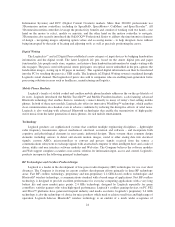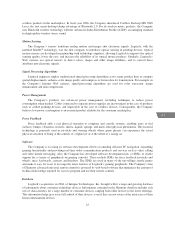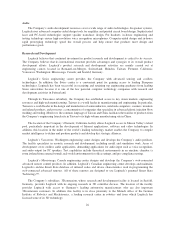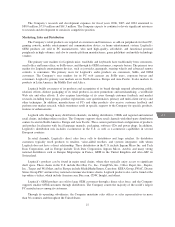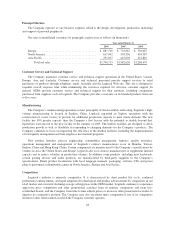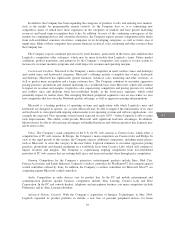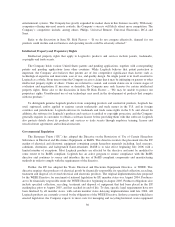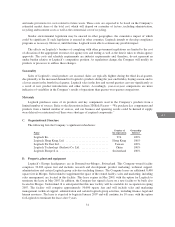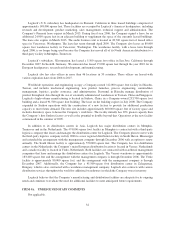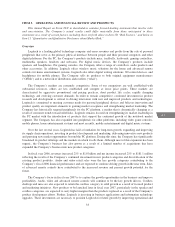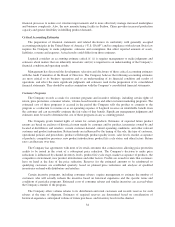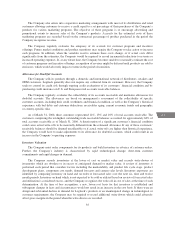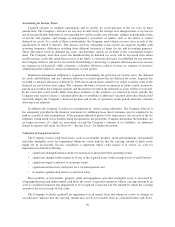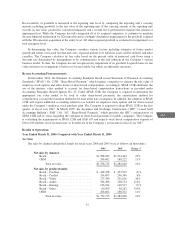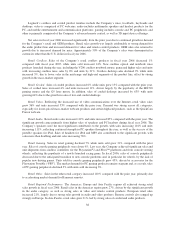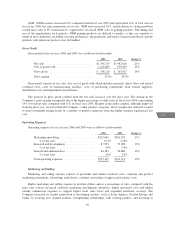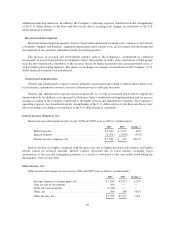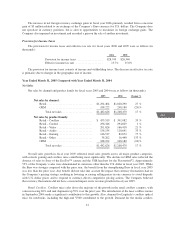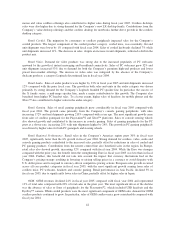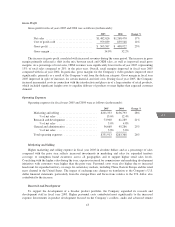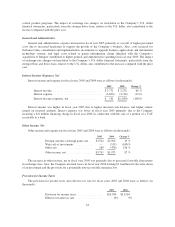Logitech 2006 Annual Report Download - page 92
Download and view the complete annual report
Please find page 92 of the 2006 Logitech annual report below. You can navigate through the pages in the report by either clicking on the pages listed below, or by using the keyword search tool below to find specific information within the annual report.financial processes to realize cost structure improvements and to more effectively manage increased marketplace
and business complexity. Also, the new manufacturing facility in Suzhou, China provides increased production
capacity and greater flexibility in fulfilling product demands.
Critical Accounting Estimates
The preparation of financial statements and related disclosures in conformity with generally accepted
accounting principles in the United States of America (“U.S. GAAP”) and in compliance with relevant Swiss law
requires the Company to make judgments, estimates and assumptions that affect reported amounts of assets,
liabilities, revenue and expenses. Actual results could differ from those estimates.
Logitech considers an accounting estimate critical if: (i) it requires management to make judgments and
estimates about matters that are inherently uncertain; and (ii) is important to an understanding of the Company’s
financial condition and operating results.
Management has discussed the development, selection and disclosure of these critical accounting estimates
with the Audit Committee of the Board of Directors. The Company believes the following accounting estimates
are most critical to its business operations and to an understanding of its financial condition and results of
operations, and affect the more significant judgments and estimates used in the preparation of its consolidated
financial statements. They should be read in conjunction with the Company’s consolidated financial statements.
Customer Programs
The Company records accruals for customer programs and incentive offerings, including certain rights of
return, price protection, consumer rebates, volume-based incentives and other customer marketing programs. The
estimated cost of these programs is accrued in the period the Company sells the product or commits to the
program as a reduction to revenue or as an operating expense, if Logitech receives an identifiable benefit from
the customer and can reasonably estimate the fair value of that benefit. Significant management judgments and
estimates must be used to determine the cost of these programs in any accounting period.
The Company grants limited rights of return for certain products. Estimates of expected future product
returns are based on analyses of historical return trends by customer and by product, inventories owned by and
located at distributors and retailers, current customer demand, current operating conditions, and other relevant
customer and product information. Return trends are influenced by the timing of the sale, the type of customer,
operational policies and procedures, product sell-through, product quality issues, sales levels, market acceptance
of products, competitive pressures, new product introductions, product life cycle status, and other factors. Return
rates can fluctuate over time.
The Company has agreements with most of its retail customers that contain terms allowing price protection
credits to be issued in the event of a subsequent price reduction. The Company’s decision to make price
reductions is influenced by channel inventory levels, product life cycle stage, market acceptance of products, the
competitive environment, new product introductions and other factors. Credits are issued for units that customers
have on hand at the date of the price reduction. Reserves for the estimated amounts to be reimbursed to
qualifying customers are established quarterly based on planned price reductions and analyses of qualified
inventories on hand with distributors and retailers.
Certain incentive programs, including consumer rebates, require management to estimate the number of
customers who will actually redeem the incentive based on historical experience and the specific terms and
conditions of particular programs. Estimated costs of consumer rebates and similar incentives are accrued when
the Company commits to the program.
The Company offers volume rebates to its distribution and retail customers and records reserves for such
rebates at the time of shipment. Estimates of required reserves are determined based on consideration of
historical experience, anticipated volume of future purchases, and inventory levels in the channel.
34


